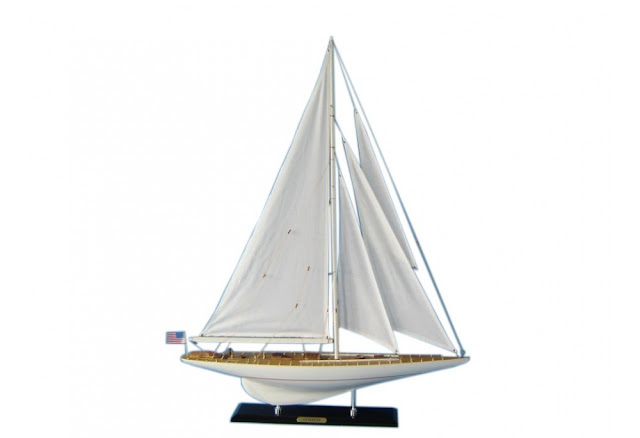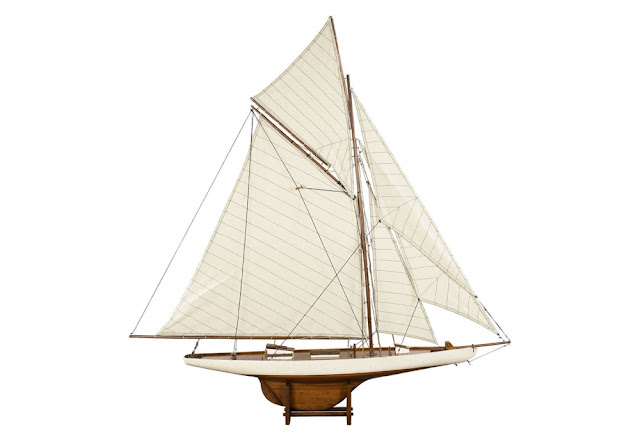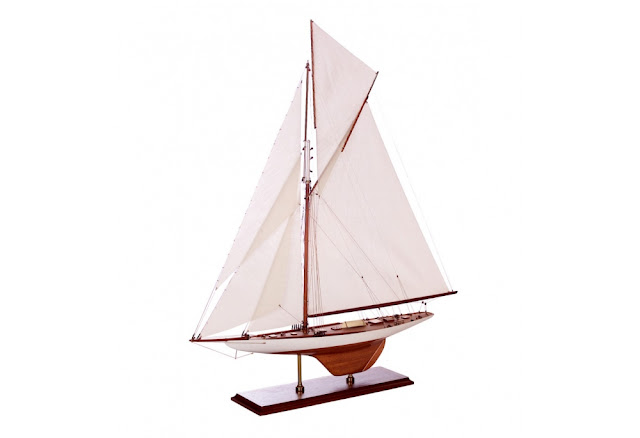Bluenose was launched at Lunenburg, Nova Scotia on March 26, 1921, as both a working cod-fishing schooner and a racing ship. This was in response to a Nova Scotian ship's defeat in a race for working schooners established by the Halifax Herald newspaper in 1920. After a season fishing on the Grand Banks, Bluenose defeated the ship Elsie from Gloucester, Massachusetts, returning the trophy to Nova Scotia. During the next 17 years of racing no challenger, American or Canadian, could wrest the trophy from her.
The America’s Cup is the most prestigious regatta and Match Race in the sport of sailing, and the oldest active trophy in international sport, predating the Modern Olympics by 45 years. The sport attracts top sailors and yacht designers because of its long history and prestige as the “Holy Grail” of yachting. Although the most salient aspect of the regatta is its yacht races, it is also a test of boat design, sail design, fundraising, and management skills. The cup, originally offered as the Royal Yacht Squadron cup, is now named after the first yacht to win the trophy, the schooner America. The trophy remained in the hands of the New York Yacht Club of the United States from 1852 or 1857 (when the syndicate that won the Cup donated the trophy to the club) until 1983 when the Cup was won by the challenger, Australia II of Australia, ending the longest winning streak in the history of sport. The skipper of Australia II, John Bertrand, was quoted in saying, “This puts yacht racing back on the map!”.
Intrepid was designed by Olin Stephens, and was built of double-planked mahogany on white oak frames. She featured important innovations both above and below the waterline. The rudder was separated from the keel and a trim tab was added. This new general underbody type, with relatively minor refinements, was used on every subsequent Cup boat until the 12-metre Australia II's winged keel of 1983. Above decks, Intrepid featured a very low boom, made possible by locating the winches below decks. The low boom caused an "end-plate effect", making the mainsail more efficient.
America's Cup
In 1967 Intrepid was skippered by Emil "Bus" Mosbacher, and defeated Australian challenger Dame Pattie. Redesigned in 1970 by Britton Chance Jr. and well captained by Bill Ficker that year, she defeated another Australian challenger, Gretel II.
Intrepid remained competitive even against aluminum 12-metre yachts. Redesigned again, this time by her original designer Olin Stephens, the Intrepid was back again for a third time in 1974, captained by Gerry Driscoll. Intrepid came within one race of becoming the only three time America's Cup defender in history, but lost the final race of the defender trials to the Courageous, which would go on to win the Cup that year with Ted Hood at the helm. Ted Hood sold Courageous to Ted Turner who went on to win the 1977 America's Cup with her.
Columbia was the defender of the tenth America's Cup race in 1899 against British challenger Shamrock as well as the defender of the eleventh America's Cup race in 1901 against British challenger, Shamrock II. It was the first vessel to win the trophy twice in a row (a record not equalled until Intrepids back-to-back wins in 1967 and 1970.)
1901 America's Cup Trials via wikipedia
Exact Replica of 1899 America's Cup Columbia
Columbia Sailboat Model
Sailboats Looks Great by the window
Exact Replica of 1899 America's Cup Columbia
Columbia Sailboat Model
Sailboats Looks Great by the window
Bring Nautical Feeling into Your Home With Nautical Decor



















0 comments:
Post a Comment